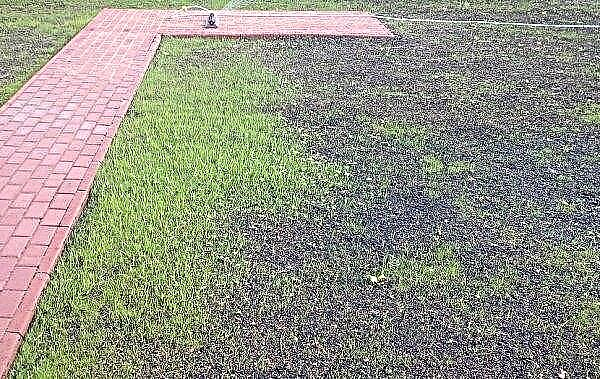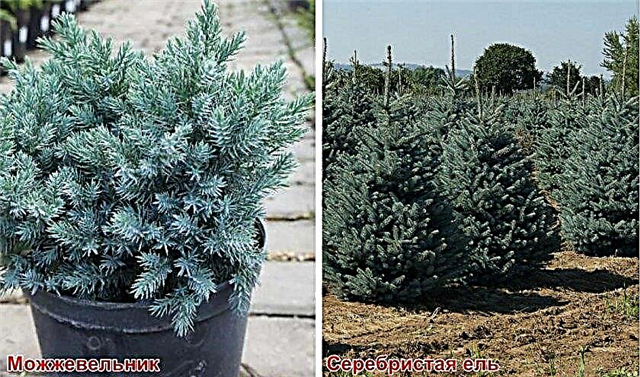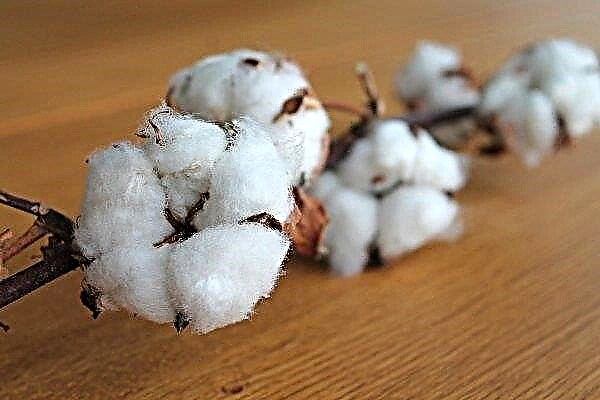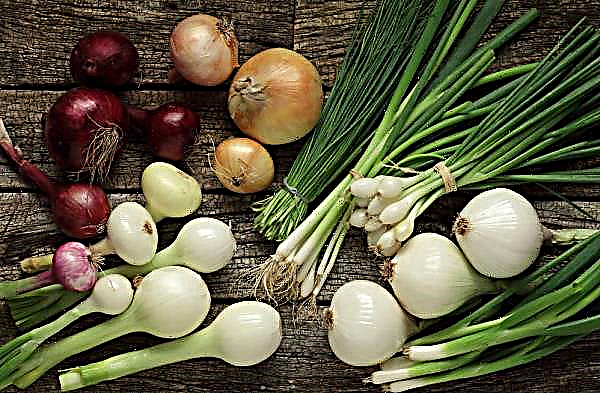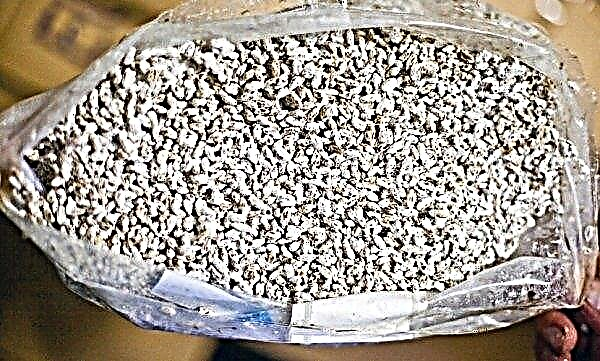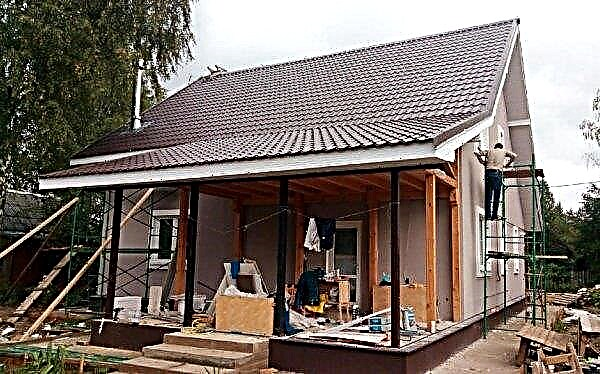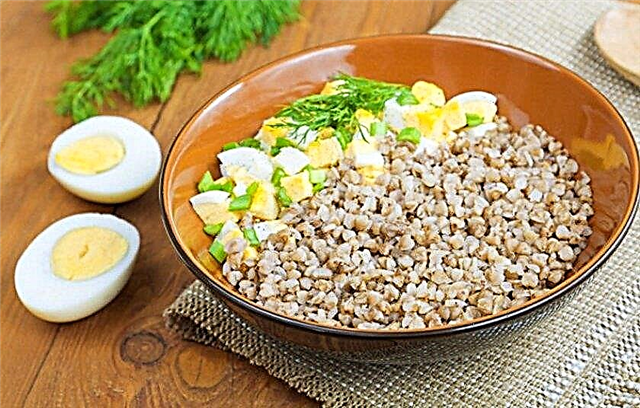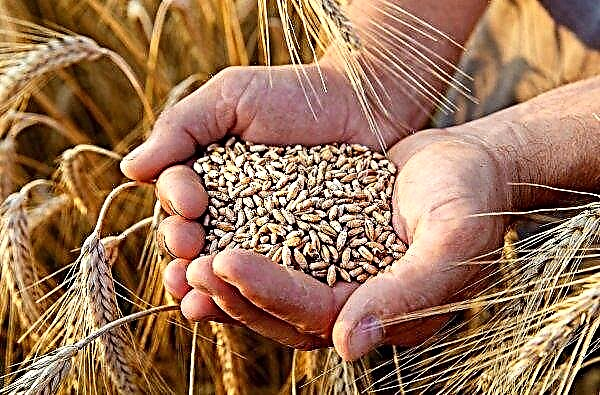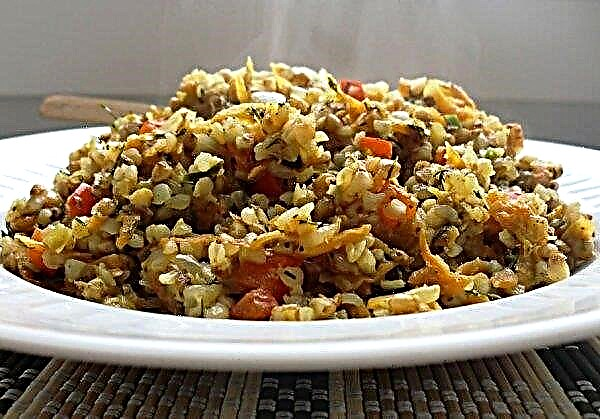Cucumbers grow well in open ground, but many gardeners prefer to grow them in the seedling method, since it allows you to get an earlier and richer crop. How to plant and care for plants properly, so that after transplanting to the garden, they continue to grow and delight the crop - read more about this later in the article.
When to plant cucumbers for seedlings
In order to grow good cucumber seedlings, it is very important to plant seeds on time. If you make a mistake with the timing, then by the time of planting in the ground the plants will be small or, conversely, too long. To prevent this from happening, experienced vegetable growers recommend determining the timing of planting.
Depending on grade
Seedlings of cucumbers are considered full-fledged and suitable for transplantation, when it has formed at least 3-4 true leaves. Plants reach this size on average in 3 weeks, and this is an indicator of mid-ripening varieties.
Early varieties (namely, they are often sown for seedlings) germinate earlier and develop faster, therefore, after 15-20 days, the sprouts can already be transplanted.
As for the late varieties, they are transplanted 1–1.5 weeks later than the early ones. If seeds are bought in a store, the growing season is always indicated on the packaging (from sowing to harvest). It remains to calculate the time of planting in the ground and count 15-25 days ago - this will be a suitable time for sowing.
Depending on the climate of the region
It is difficult to predict the weather, but, in general, it is recommended to plant seedlings on the beds no earlier than the night temperature stops falling below +13 ° C, and the soil warms up to + 10-12 ° C. In each region, such a temperature indicator is reached at different times.
In the middle lane - this is the beginning or middle of May, therefore, seeds for seedlings (depending on the variety) must be sown in mid or late April.
In the southern regions, stable spring weather is set 1–1.5 months earlier, so seedlings can be sown in March. At the same time, in the northern regions, spring arrives 3-4 weeks later than in the middle lane.
Here, cucumbers are planted in early June, and if an early harvest is needed, then planting is carried out in greenhouses, under a film or “warm” beds are built.
Did you know? The homeland of cucumbers is considered the territory of modern India, where they are still found in the wild. It was there, according to scientists, that the cucumber first entered the culture more than 6 millennia ago.
According to the lunar calendar
Adherents of the theory that the Moon has an influence on the growth and development of all life on Earth, try to plant plants exclusively on “favorable” days defined by the lunar calendar. In the sowing calendar, this information is set out by month with the exact dates at which it is recommended to sow the plants. It also contains general tips regarding sowing seeds. For example, crops that form fruits in the ground part of the stem, which include cucumbers, are recommended to be sown in the growing moon. And the closer the sowing day to the new moon, the faster the seeds begin to germinate. When the moon is waning, the roots become vulnerable.
It also contains general tips regarding sowing seeds. For example, crops that form fruits in the ground part of the stem, which include cucumbers, are recommended to be sown in the growing moon. And the closer the sowing day to the new moon, the faster the seeds begin to germinate. When the moon is waning, the roots become vulnerable.
How to plant cucumbers on seedlings
After determining the timing, the next task is sowing seeds and preparing for this process.
Soil mix
A ready-made substrate is sold for seedlings, but if you want to make the soil mixture yourself, then prepare one of these compounds:
- turf land, peat, dry humus and sawdust in equal parts;
- turf, sand, peat and sawdust in equal parts with the addition of a small amount of vermiculite or coconut fiber;
- turf land, lowland peat, humus and sawdust in a ratio of 4: 4: 1: 1;
- turf, rotted manure and sand in a ratio of 3: 3: 1.
Important! Seedlings are sensitive to acidity and literally languish in such an environment, so avoid formulations with a high peat content and check the pH of the soil before planting.
The mixture prepared by yourself must be decontaminated: spill well with boiling water, a solution of potassium permanganate or warm in the oven for half an hour at a temperature of + 80–100 ° C. After this, fertilizers must be added to the soil: 6 g of urea, 8 g of potassium sulfate, 10 g of superphosphate and 2 g of magnesium sulfate per 10 kg of soil. Mix everything, cover with a film and leave for 1-2 weeks so that the nutrients dissolve in the soil.
After this, fertilizers must be added to the soil: 6 g of urea, 8 g of potassium sulfate, 10 g of superphosphate and 2 g of magnesium sulfate per 10 kg of soil. Mix everything, cover with a film and leave for 1-2 weeks so that the nutrients dissolve in the soil.
Capacity for growing
There are two ways to grow seedlings: in one large capacity (containers, boxes) with further picking of sprouts and in separate small pots with a volume of 0.2-0.3 l. Since cucumbers do not tolerate any transplant very well, it is best to immediately grow seedlings in separate containers.
Glasses made of paper or plastic are suitable for this purpose - they can be cut and the plant can be easily removed along with the ground without damaging the roots. It is also convenient to use cartridges for sowing, but peat tablets are ideal.
In them, cucumber seedlings feel great, and when the time comes for planting on the garden, you just need to put a tablet with a sprout in the hole and sprinkle with earth.
Seed preparation
To obtain high-quality and fast seedlings, seeds must be properly prepared for sowing. About a month before the expected date, turn them into heat, somewhere closer to the heating appliances, to warm up. Further, before planting, soak the seed in water for a couple of hours. Throw away empty seeds that have surfaced, and deplete the full ones that have sunk to the bottom in one of the following ways:
Throw away empty seeds that have surfaced, and deplete the full ones that have sunk to the bottom in one of the following ways:
- hold for 20-30 minutes in a 1% solution of potassium permanganate;
- place for 10-12 hours in a solution of ash (2 tbsp. l / 1 l of water) with the addition of 1 tbsp. l nitrofoski;
- pour 2-3% peroxide solution for 6 hours.
The disinfected seeds are washed, lightly dried and soaked in a growth stimulator so that they hatch and sprout faster.
As a stimulant, you can use:
- ready-made solution of “Heteroauxin” - the dosage is 25 ml / 1 liter of water, can withstand 12 hours;
- aloe juice - squeezed gauze from the plant juice is soaked and wrapped in seeds for 2 days;
- succinic acid solution - 15 ml / 1 liter of water, soaked for a day.
After such preparation, most of the seeds usually already have small sprouts, but even if they are not there, the seeds can be safely sown in the ground.
Sowing seeds
The soil at the time of sowing should be moist, but not wet, so the day before it needs to be well watered and slightly loosened. If planting is carried out in large containers, then shallow (2 cm) furrows or holes are made on the surface. They nests placed seeds of 2-3 pieces at a distance of 6-8 cm and sprinkled with a layer of earth.
In cups and cassettes, planting is carried out by analogy - the containers are filled up to half with a substrate, a recess is made in the center, seeds are put into it and sprinkled. In small containers, there must be a drainage hole. With peat tablets even easier. They already have a deepening, you just need to soak the tablet, put the seeds and cover with a substrate. After sowing, the containers are covered with a film and put in a warm place (+ 23–25 ° C) until sprouts appear.
With peat tablets even easier. They already have a deepening, you just need to soak the tablet, put the seeds and cover with a substrate. After sowing, the containers are covered with a film and put in a warm place (+ 23–25 ° C) until sprouts appear.
Seedling Care
Care measures are the main component of successful seedling cultivation. There are several points to consider.
Location
In anticipation of the shoots of the tank should be put closer to heat, lighting at the moment does not matter. All this time, you need to maintain soil moisture and daily remove a film for a few minutes for ventilation.
As soon as the first shoots appear, the film is removed, and the seedlings are transferred to a bright place, on a well-lit window sill, provided that there are no drafts. If it is cold and blowing on the windowsill, it is better to transfer the seedlings to a more secluded place.
Temperature and lighting
When the seeds begin to germinate actively, the temperature should be lowered to +20 ° C so that the sprouted plants do not stretch. After the appearance of mass shoots, the degree is again increased to + 22–23 ° C, while the night temperature should not fall below +20 ° C.
Important! Do not put seedlings on window sills facing south. Due to the excessive amount of sun and the reflection of the rays, delicate sprouts risk a burn.
Under such conditions, in 5-6 days, the first seedlings will appear in the seedlings. Now they are no longer so fragile, and temperature fluctuations will not harm them, but you need to make sure that during the day the degree does not exceed +25 ° C, and at night it does not fall below +18 ° C. As for lighting, during spring planting (late March - April), seedlings usually have enough daylight. A sunny window sill in the southwestern part of the house will provide full light, but if the weather is cloudy, additional lighting may be required.
As for lighting, during spring planting (late March - April), seedlings usually have enough daylight. A sunny window sill in the southwestern part of the house will provide full light, but if the weather is cloudy, additional lighting may be required.
If seedlings are grown in the winter months, then you can not do without illumination. Focus on the age of the plants. In the first days after germination, maximum illumination is required, otherwise the seedlings will quickly stretch. The next 2 weeks, daylight hours should be at least 16 hours, then 12 hours are enough before transplanting into the ground.
Watering
From the moment of planting to seedlings, the soil is moistened as the top layer dries, which allows the seedlings to grow strong roots. Subsequently, watering is carried out 1-2 times a week with settled water at room temperature (not colder than +23 ° C).
Did you know? The root system of cucumbers consists of a thin rod root, which branches into many processes located horizontally at a depth of 10-15 cm. Because of this, plants cannot be poured and deeply loosened.
It is necessary to water under the root, without filling the plants and avoiding moisture on the leaves. During the period when the heaters dry out the air, it is permissible to lightly spray the seedlings to maintain humidity at the level of 70–80%.
Top dressing
For the period from germination to planting on the bed, seedlings need to be fed at least 2 times. The first top dressing is introduced at the stage of the appearance of 1-2 true leaves. It can have both mineral and organic composition.
The mineral mixture is prepared from 15 g of superphosphate, 7 g of saltpeter and 8 g of potassium sulfate, dissolved in 10 l of water. You can also use a solution of nitrophosphate.
As an organic feed acceptable liquid mullein diluted in water in a ratio of 1: 4, or droppings in a ratio of 1: 7. The second top dressing is carried out after the first after 2 weeks. For her, the amount of minerals doubles. In addition, it is recommended to spray the leaves with a solution of trace elements.
Important! Do not forget to thin out seedlings before top dressing. Leave one strong sprout in the pot, and carefully cut the rest: you must not tear and pull, otherwise you can damage the fragile root system.
Seedling hardening
About a couple of weeks before transplanting, seedlings are accustomed to the natural environment - they are hardened. To do this, they take her out into the street, every day increasing the duration of the procedure from 15–20 minutes to several hours. Pots are placed in a slightly shaded place, where there are no drafts and direct rays of the sun. When plants get used to being constantly on the street, they can be transplanted to a permanent place.
When plants get used to being constantly on the street, they can be transplanted to a permanent place.
Possible diseases of seedlings of cucumbers
Cucumber seedlings are very vulnerable and at home often get sick or come into a state when its quality is deteriorating.
What problems can prevent the cultivation of good seedling material, we will consider further:
- Yellowing leaves. This phenomenon can be caused by the tightness of containers, when the roots have grown and they lack space, as well as insufficient or defective top-dressing (deficiency of certain nutrients). Yellowing of cotyledon leaves indicates a lack of light. In this case, you just need to get rid of the reasons.
- Stretching plants. Occurs due to lack of lighting or too high room temperatures.
- Root rot. The disease manifests itself when nothing can be done: the seedlings stop growing, wither and die, when digging out, rotten roots are found. Reasons: watering with cold water or hypothermia of the substrate.
- Blackleg. A fungal disease that develops against the background of waterlogging in combination with high temperatures. The stems of seedlings begin to blacken at the base and lie down. The disease is contagious, therefore, diseased specimens need to be urgently removed, and healthy specimens should be transplanted into a new substrate.
All these complications can be avoided if you follow the recommendations for growing. As a prophylaxis, periodically treat the plants with Epin-Extra, dissolving 1-2 drops in 100 ml of water.
Planting seedlings in a permanent place
If the seedlings are well grown and strong, do not overexposure it, but plant it in a permanent place.
When to plant
As already specified above, seedlings of cucumbers are planted in the soil at the age of 3-4 weeks, depending on the variety, climate of a particular region and the state of seedlings. So, in the middle lane the second decade of May is considered the most favorable period for transplantation.
By this time, the soil usually warms up to +15 ° C. If spring has dragged on, and seedlings have already grown, it is planted under a film. During the day, she is removed, and at night, in case of frost, she returns to the garden.
Cucumbers can be planted in glazed polycarbonate greenhouses from the beginning to mid-April. In other regions, landing dates may shift 1 month ago or forward, depending on whether it is south or north.
As for the choice of the day, the most favorable is considered the second half of the day in cloudy weather or in the evening after 18 hours.
Where to plant
To equip the beds, you should choose an open, well-lit area, where there are no winds and drafts. The depth of groundwater for cucumbers is not important, since their roots are superficial and do not grow inland. In the fall, take care of fertilizer so that the land is loose and fertile for planting seedlings.
Remember that cucumbers are easily infected with diseases, so you need to carefully choose their neighbors and analyze their predecessors. Do not plant seedlings after crops that have diseases similar to cucumbers: pumpkins, squash, beets and zucchini.
Favorable precursors and neighbors for cucumbers are tomatoes, eggplant, cabbage, peppers, onions.
How to plant
Before planting, it is recommended to pour the garden bed with a disinfectant solution (potassium permanganate, vitriol) and shallow loosen it. Next you need to prepare the holes. They dig in a checkerboard pattern at a distance of 60 cm from each other and between the rows.
If trellis is to be installed, a more compacted fit is allowed at a distance of 40-50 cm between the holes and 1 m between the rows.
If the bed is not fertilized, then a handful of manure or compost is laid at the bottom of each hole, after which water is poured. While the moisture is absorbed, the seedlings are freed from the dishes in which they grew, trying not to damage the roots.
Plants are placed in the wells and covered with earth to the level of cotyledon leaves. Then they water again, and when the moisture is absorbed, the bed is covered with mulch.
On this, the process of growing seedlings is completed, but no less troublesome period of care for the garden begins, which needs to be watered, fertilized, treated for diseases and pests in time. But the result is worth it, because already at the beginning of summer you can enjoy fragrant homemade cucumbers.



